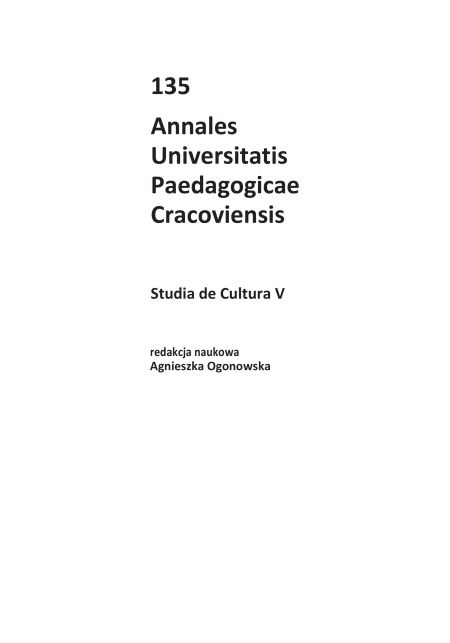Abstrakt
Strategies of the image: on Jean-Luc Godard’s “adaptations”
The article results from introductory research into the question of broadly defined pictorialness of film images in Jean-Luc Godard’s works. Strategies of the image inscribed by the director in his own films may be interpreted as a type of adaptations of paintings. Recollection of the most exemplary adaptations of paintings in the trilogy: Passion (1982), First Name: Carmen (1983) and Hail Mary (1984), and in the early film Pierrot le fou (Pete the Madman; 1965) evokes reflections upon the nature of the film image. It also testifies to the constant search for the nature of pictorialness and experiments with pictures stemming from various disciplines which meet in one work. The mode of existence of painted images in relation to the film, characteristic of Godard, is described by Jacques Aumont as “cinematization” (to be differentiated from the known kinetisation), that is the mechanism of the film image emerging from a painting. Thus characteristic and unique image strategies can be deciphered from Godard’s works. The strategies should not necessarily be seen as determinants of quotations, although they point to their origin, but as an element enriching the reflection on film-cinema. Research in the scope of lighting, composition of frame, colour (Godard-colourist), artistic shaping of frame, all lead the filmmaker directly from the film image to the painted image, and the other way round. Hence Godard seems to approach the substantiation of Andre Malraux’ Museum of Imagination understood as an archive of images, realizing the idea completely in “Histoire(s) du cinéma” (1988-1998) - a project broadly described and appreciated by its contemporaries.
Bibliografia
Baecque de A. (2010), Godard. Biographie, Paris.
Zobacz w Google Scholar
Bergala A. (1999), Nul mieux que Godard, Paris.
Zobacz w Google Scholar
Frodon J.-M. (2004), Jean-Luc Godard. Parmie nous, „Cahiers du cinéma”, 590.
Zobacz w Google Scholar
Godard J.-L. (1998), Jean-Luc Godard par Jean-Luc Godard. 1984–1998, t. 2, Paris.
Zobacz w Google Scholar
Godard J.-L. (2002), Montaż, moje piękne zmartwienie, tłum. T. Lubelski, [w:] Europejskie manifesty kina. Od Matuszewskiego do Dogmy. Antologia, wybór, wstęp i oprac. A. Gwóźdź, Warszawa.
Zobacz w Google Scholar
Godard J.-L., Vautier R. (2006), Au nom des larmes dans le noir, [w:] Jean-Luc Godard. Documents, N. Brenez, D. Faroult et al., Paris.
Zobacz w Google Scholar
Ishaghpour Y., Godard J.-L. (2000), Archéologie du cinéma et mémoire du siècle, farrago Tours.
Zobacz w Google Scholar
Mulvey L. (2010), Do utraty wzroku. Wybór tekstów, red. K. Kuc, L. Thompson, tłum. J. Murczyńska, Kraków–Warszawa.
Zobacz w Google Scholar
Nemer F. (2006), Godard (le cinéma), Paris.
Zobacz w Google Scholar
Païni D. (2006), D’apres JLG… [w:] Jean –Luc Godard. Documents, N. Brenez, D. Faroult et al., Paris.
Zobacz w Google Scholar
Prédal R. (1989), Ecrire et peindre: le god-art et le pop-art, Le cinéma selon Godard, „CinémAction”, 52.
Zobacz w Google Scholar
Roussel B. (1989), “Courbes et subversion esthétique: une approche plastique d’Alphaville, Le cinéma selon Godard, „CinémAction”, 52.
Zobacz w Google Scholar
Shafto S. (2003), De la peinture et de l’histoire dans les Histoire(s) du cinéma, Où en est le God-Art? “CinémAction”, 109.
Zobacz w Google Scholar
Wybrana filmografia
Zobacz w Google Scholar
Alphaville, 1965, Francja, operator: Raoul Coutard.
Zobacz w Google Scholar
Szalony Piotruś (Pierrot le fou), 1965, Francja, operator: Raoul Coutard.
Zobacz w Google Scholar
Ratuj się kto może (życie) (Sauve qui peut (la vie)), 1979, Francja, operator: William Lubtchansky, Renato Berta.
Zobacz w Google Scholar
Pasja (Passion), 1981–82, Francja, operator: Raoul Coutard.
Zobacz w Google Scholar
Imię Carmen (Prenom Carmen), 1983, Francja, operator: Raoul Coutard.
Zobacz w Google Scholar
Zdrowaś Mario (Je vous salue, Marie), 1984–85, operator: Jean-Bernard Menoud.
Zobacz w Google Scholar
Historie kina (Histoire(s) du cinéma), 1988–98.
Zobacz w Google Scholar
Nasza muzyka (Notre musique), 2004, Francja, operator: Julien Hirsch.
Zobacz w Google Scholar

